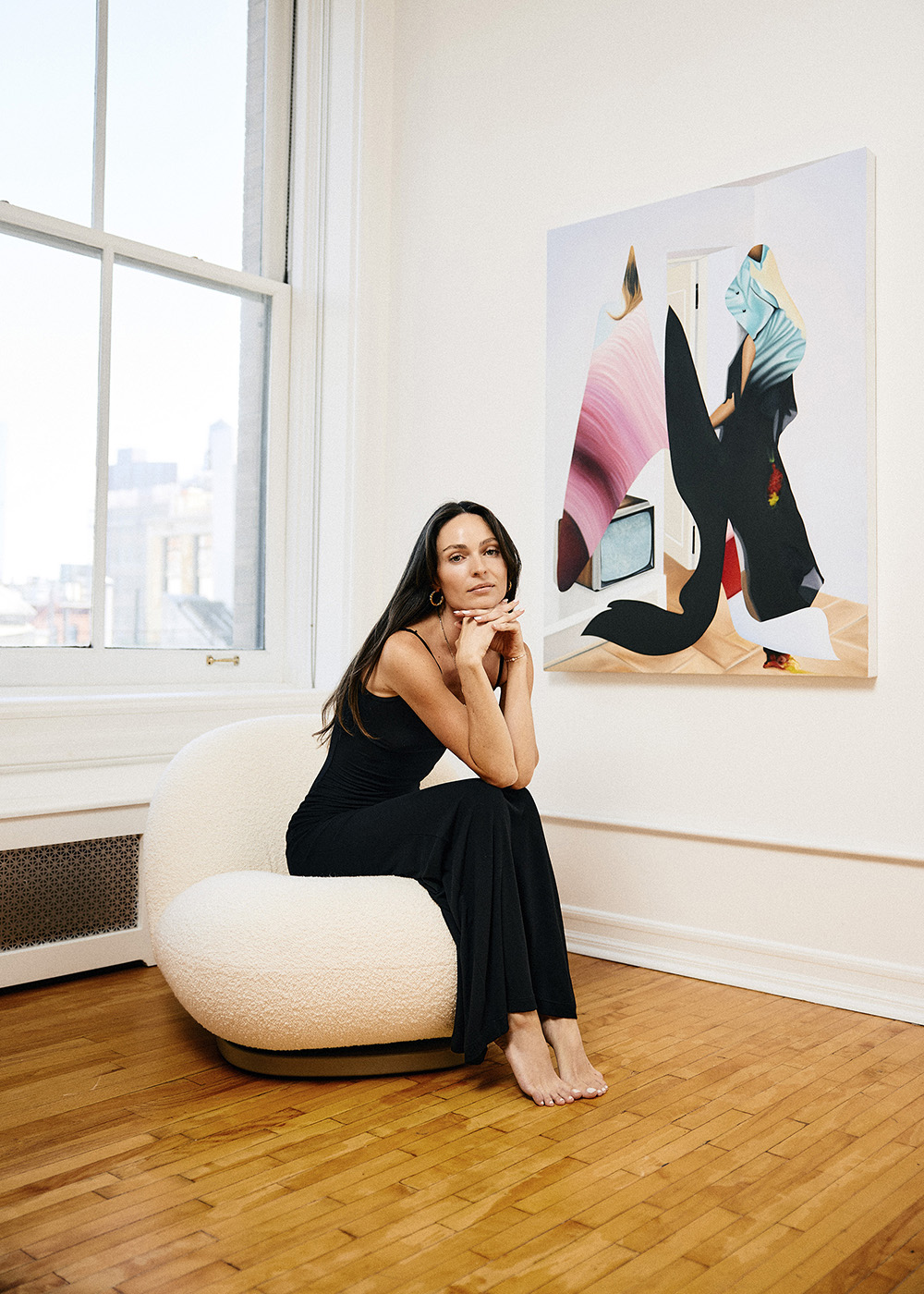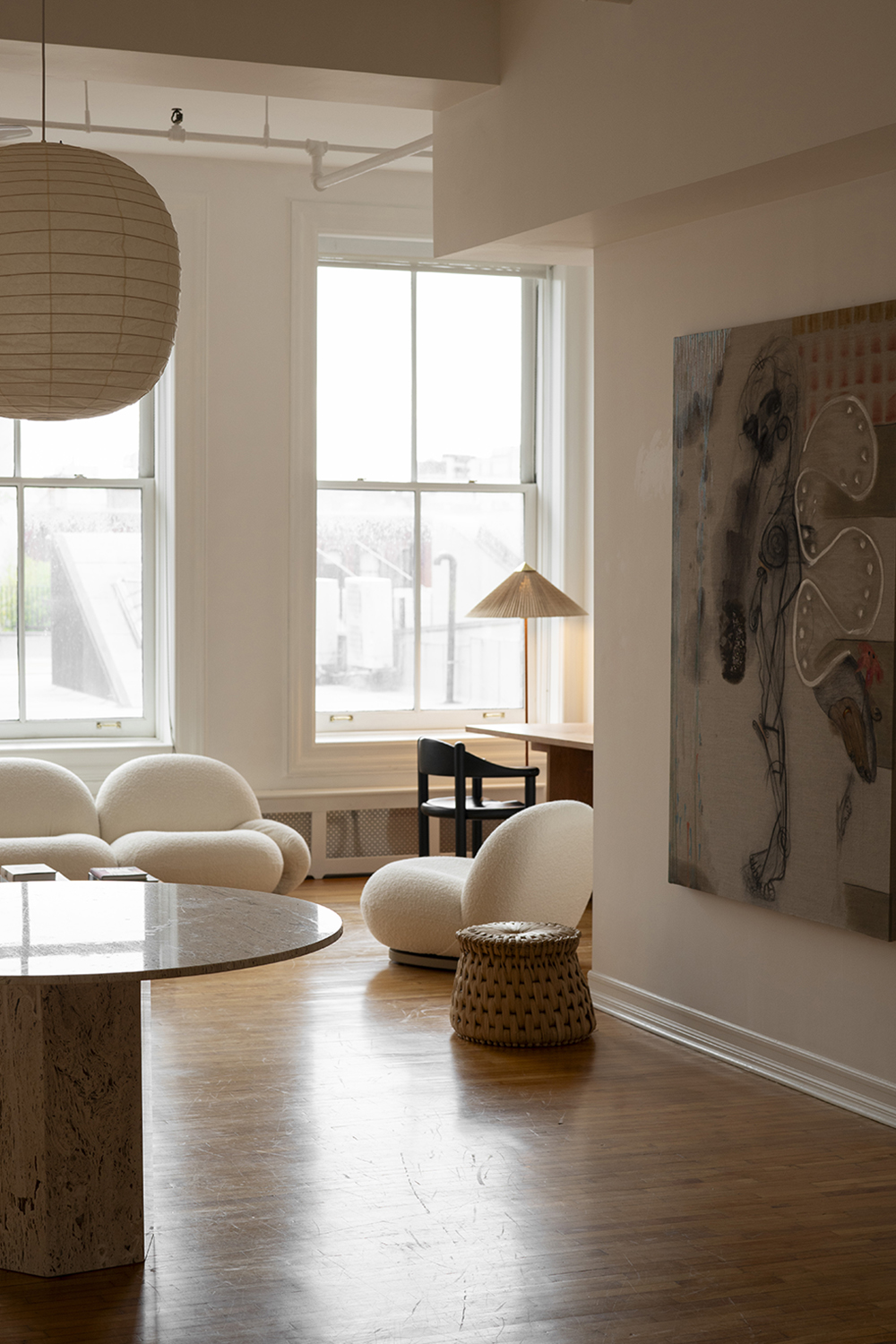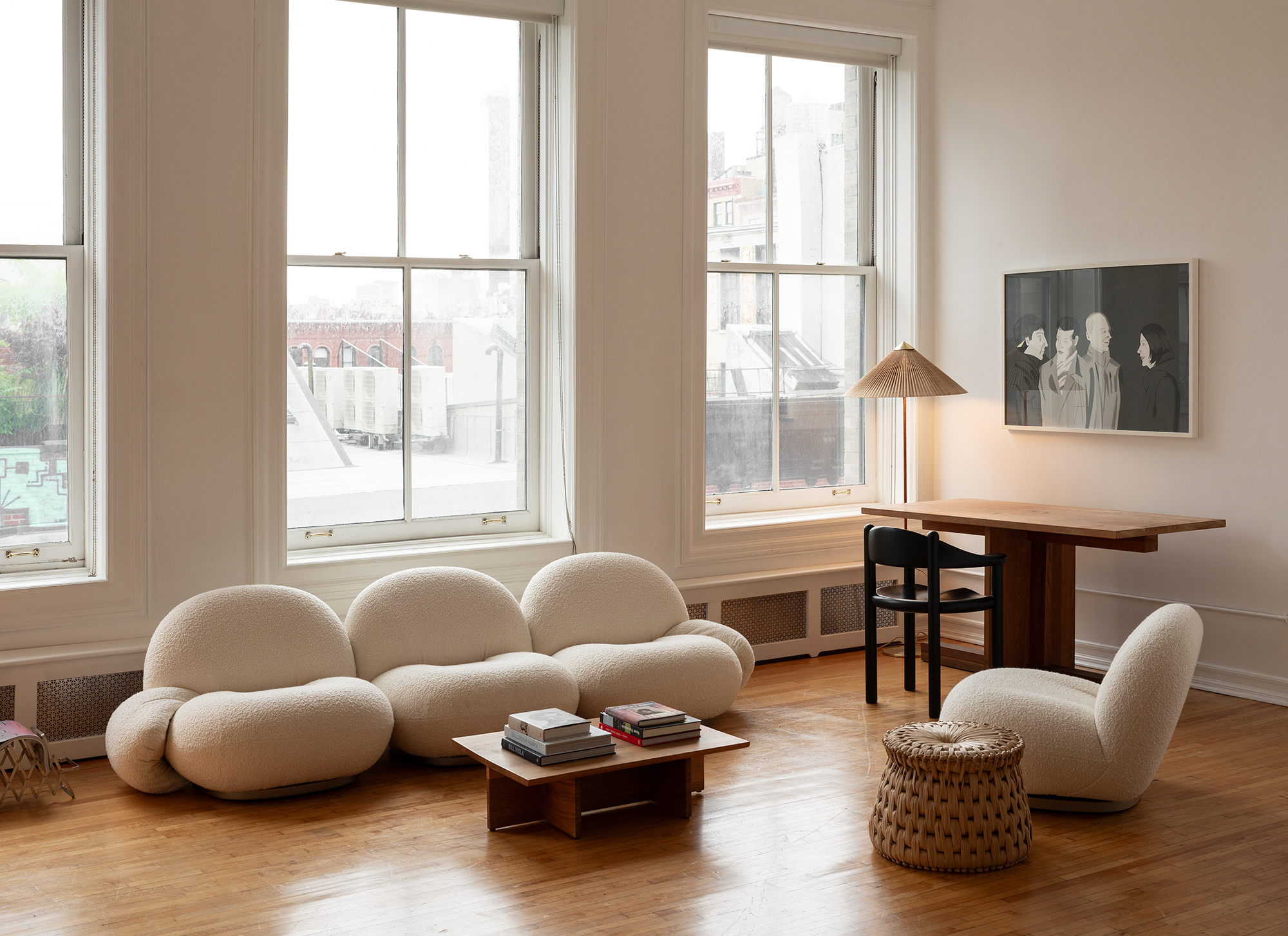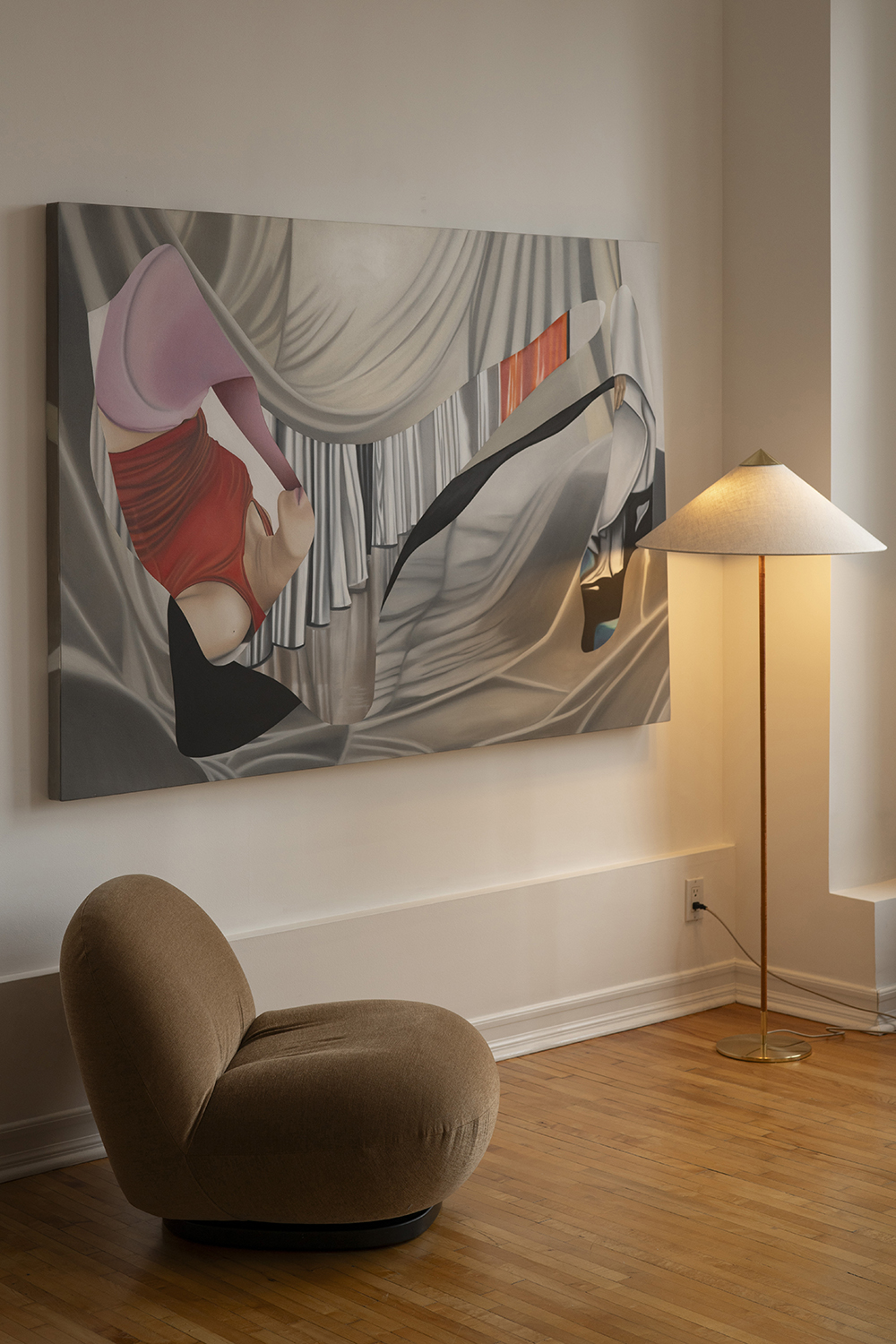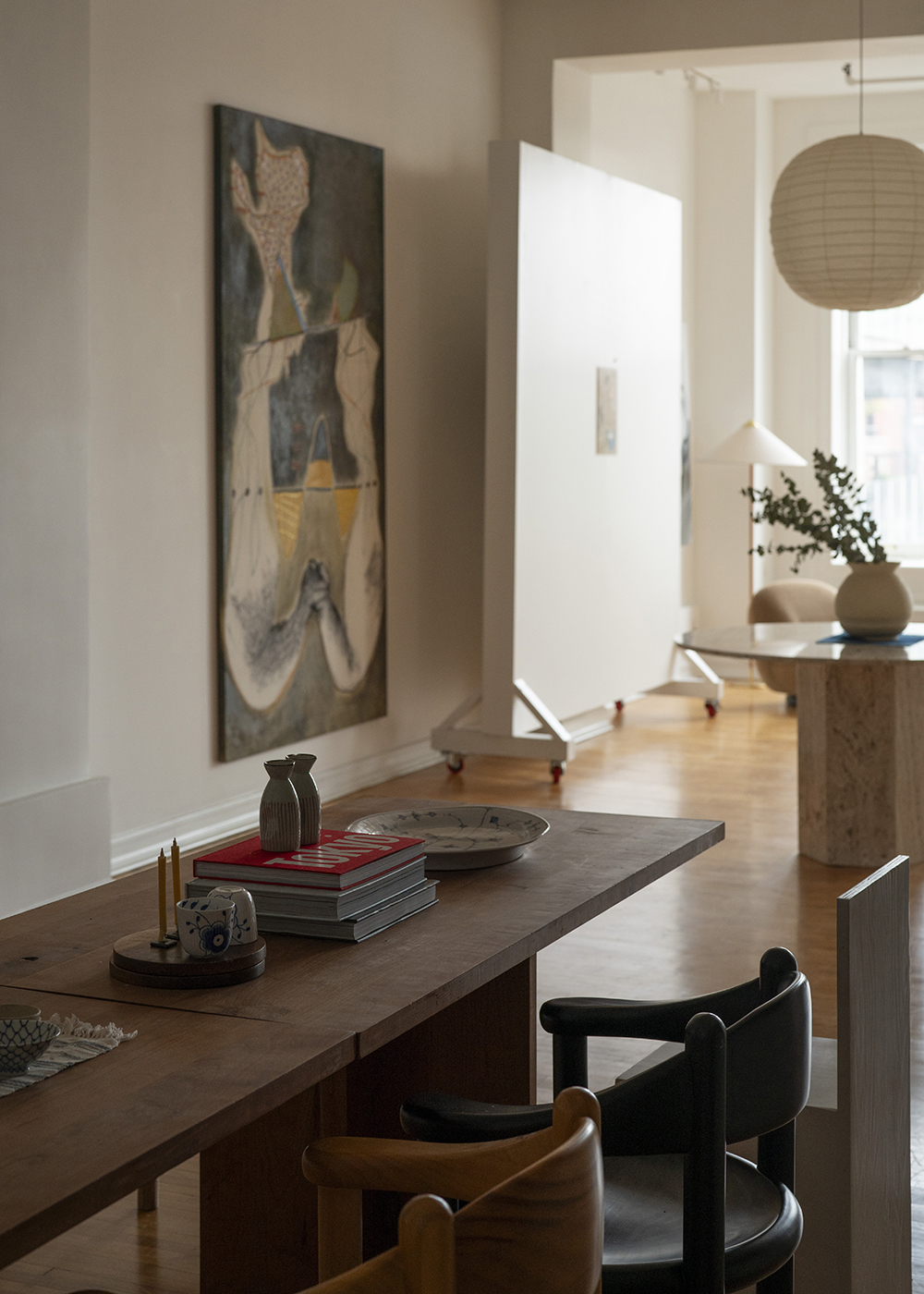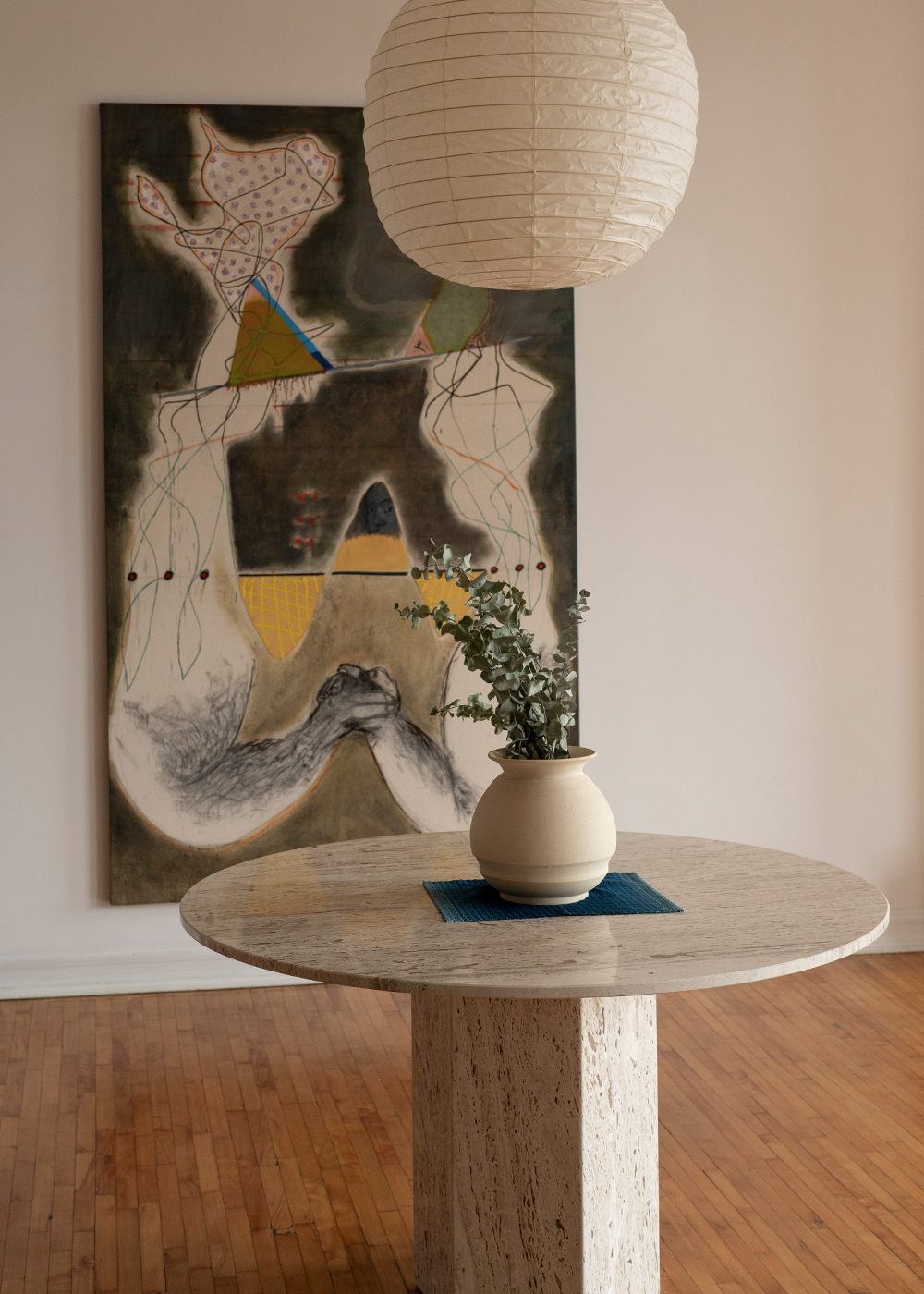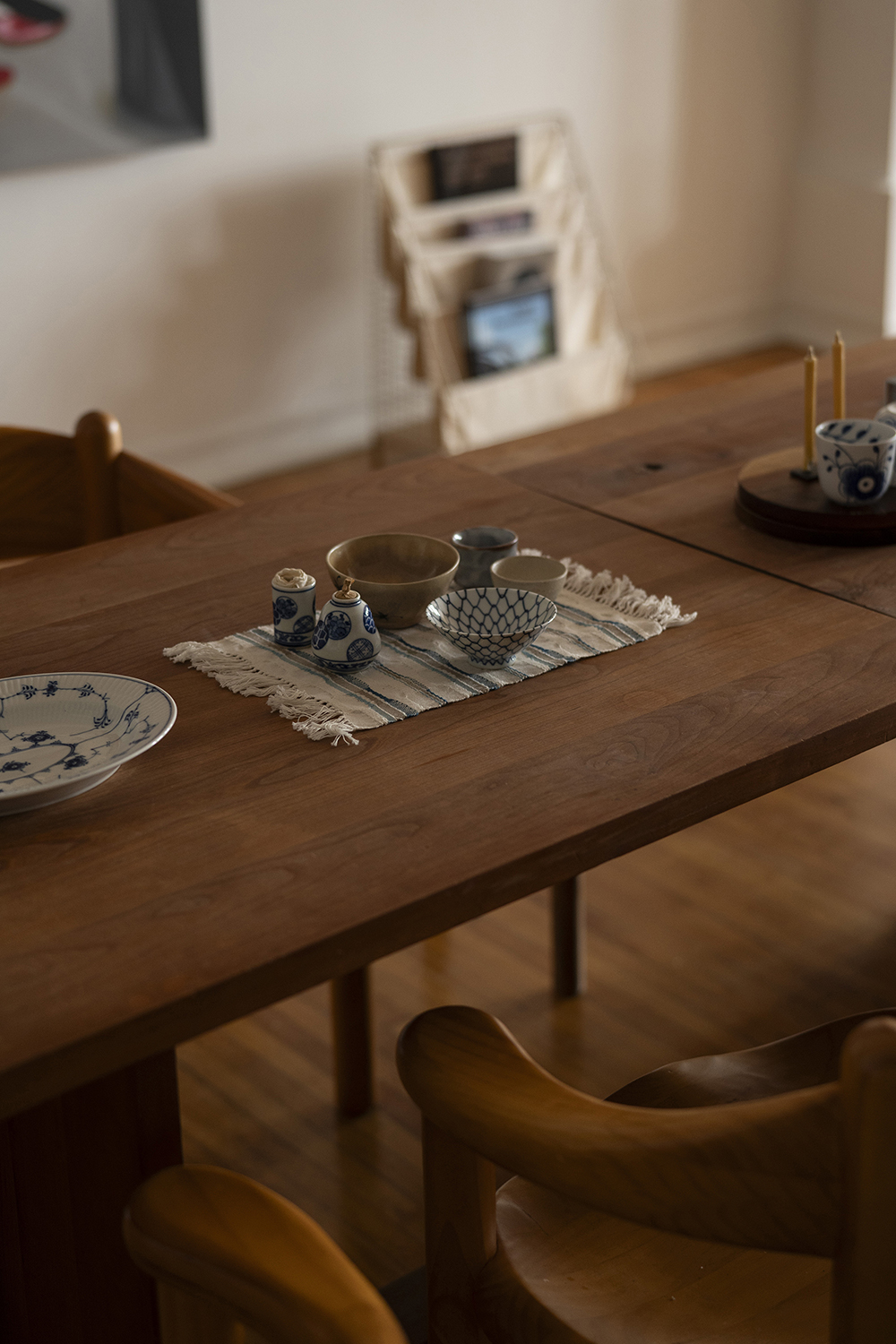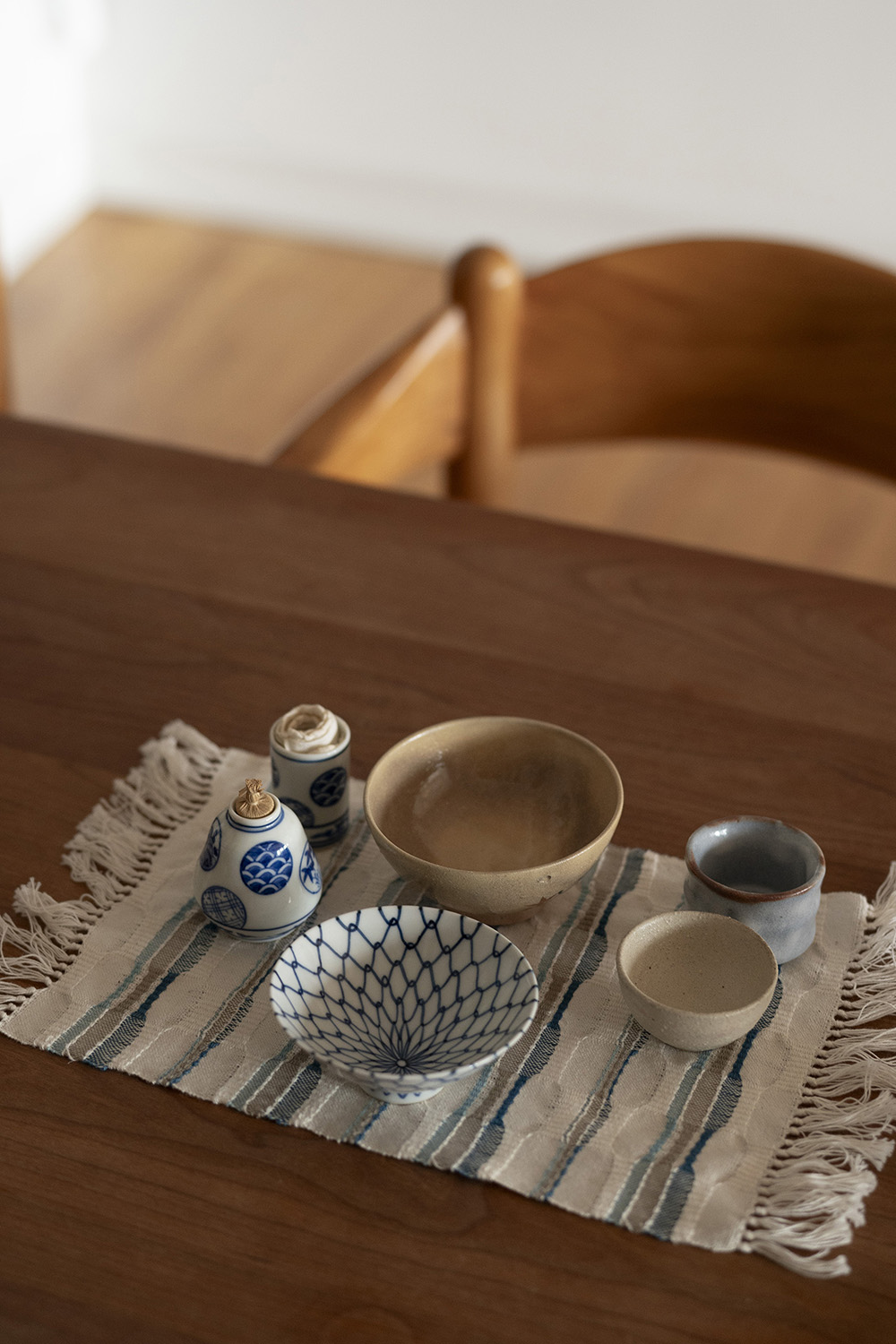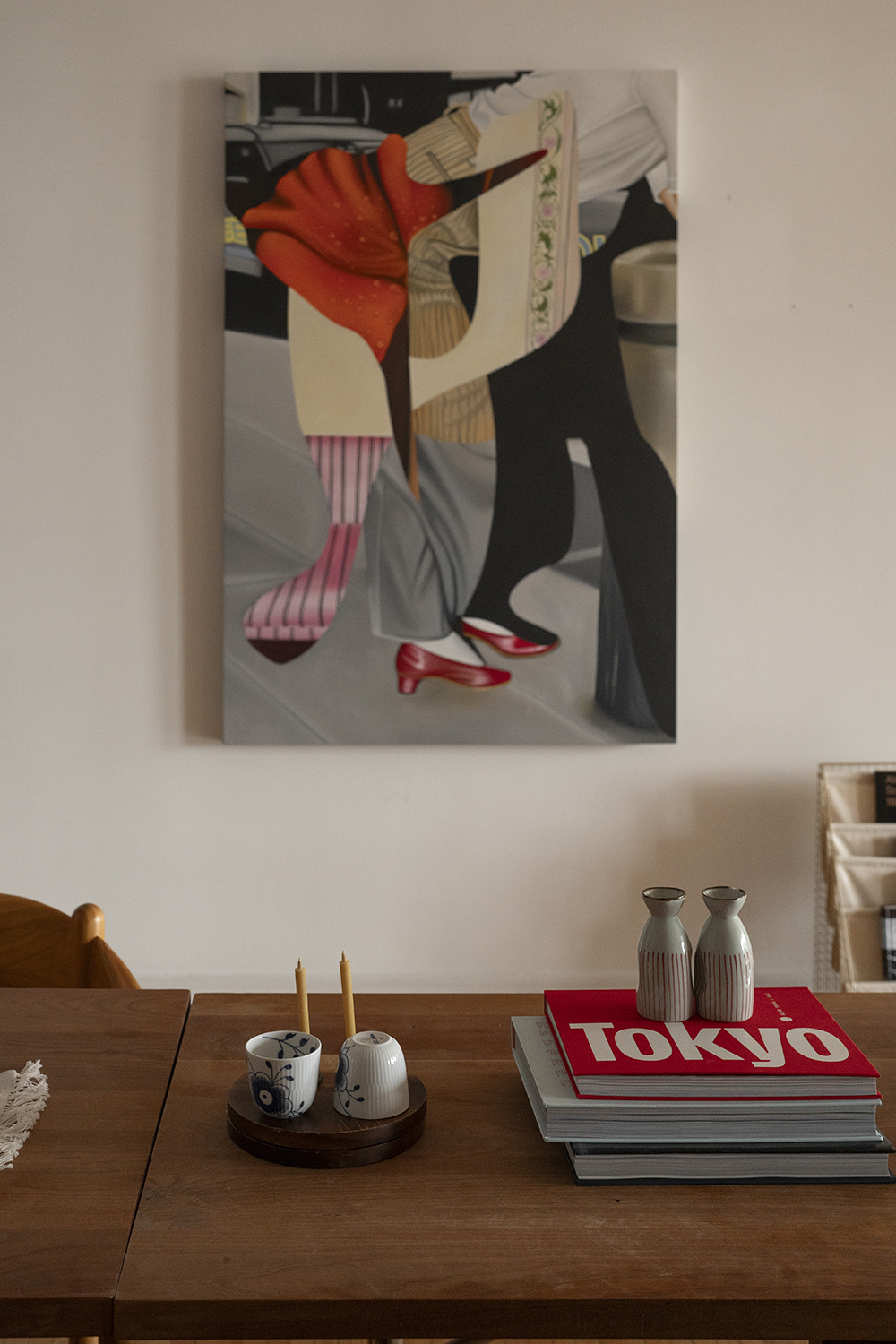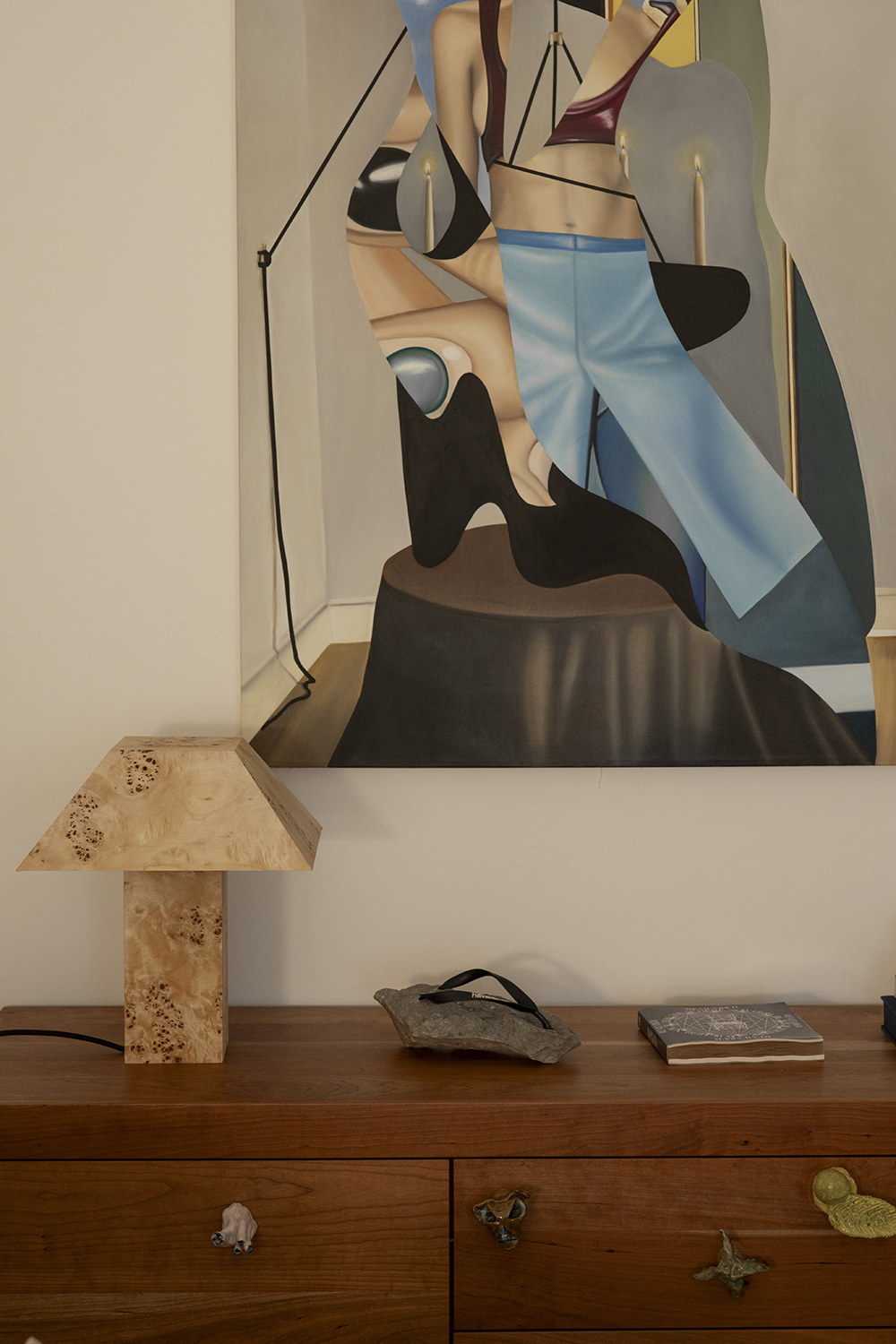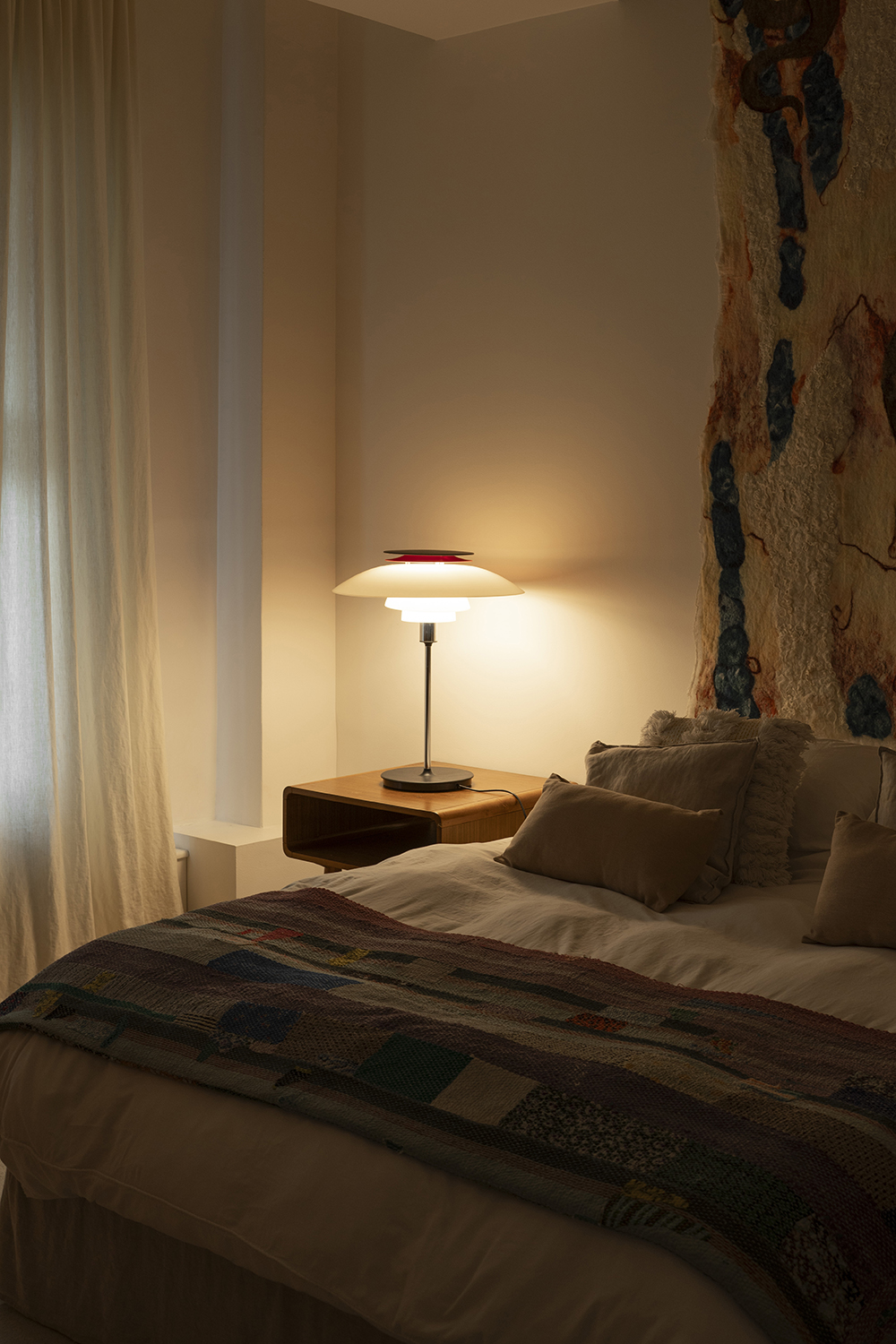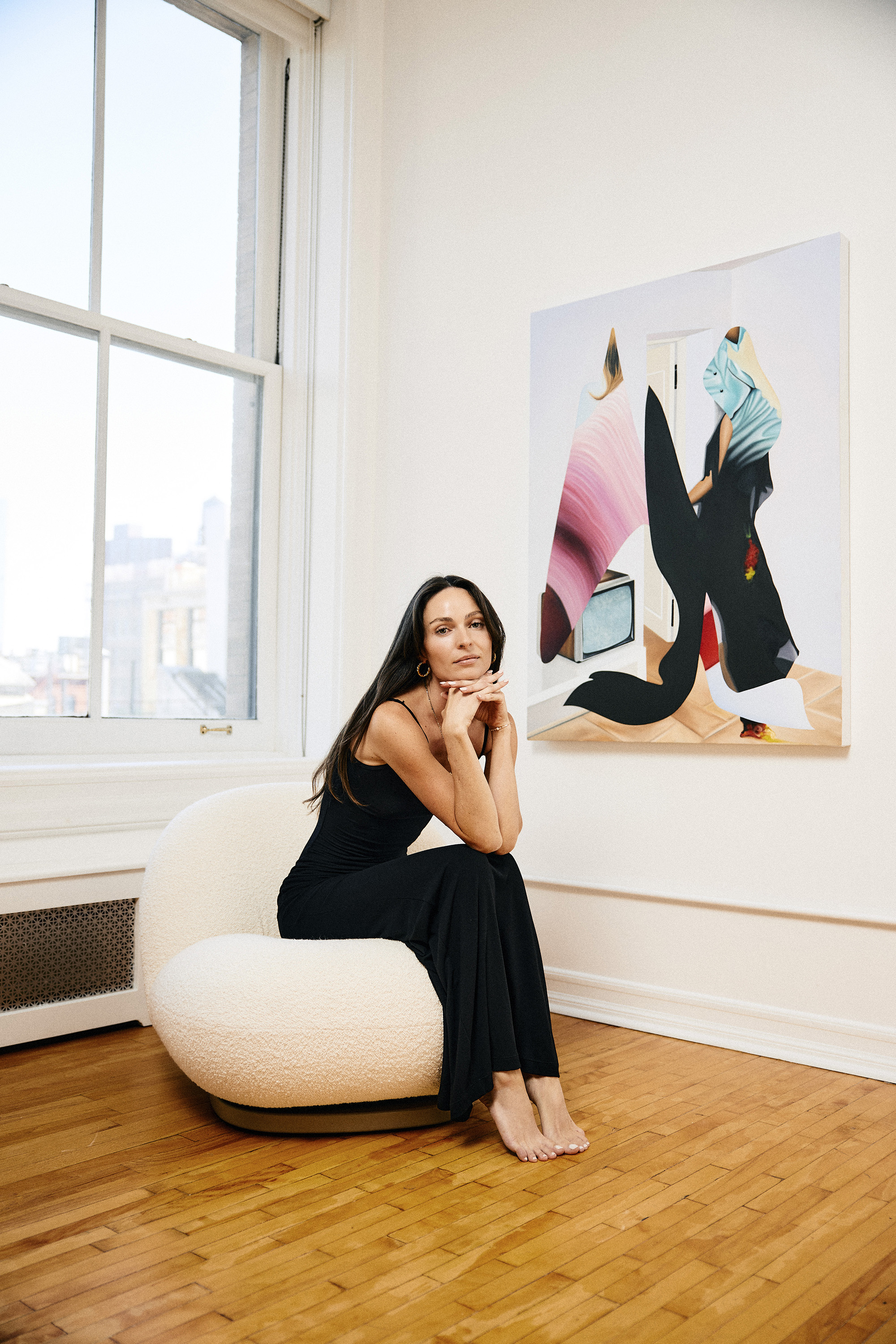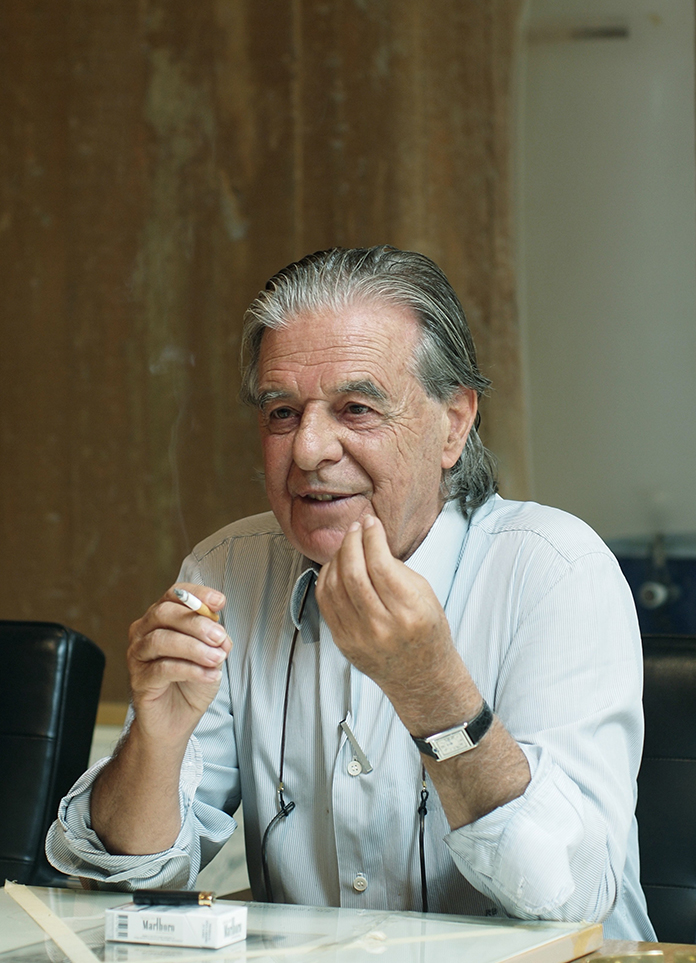Danish curator and art advisor Elisabeth Johs has created a space inside her SoHo loft in New York that is both home and gallery. As the second outpost of JO-HS, it extends the cultural experiment she initiated in Mexico City, but unfolds with a more intimate and slower rhythm. This loft is at once her private residence and a stage where art and life intersect, a gentle in-between where trust and dialogue shape how art is experienced.
Elisabeth Johs: "For me, the two aren’t separate. Inviting people into my home is an act of trust — and I think art thrives in that atmosphere. When a work is seen next to a book or a lamp, it enters a more vulnerable register. People notice different details, they relax. I navigate the line by being selective with what I open up, but I find that the intimacy adds meaning rather than diminishing it."
The origins of JO-HS lie in Mexico City, a place where art naturally permeates daily life. There, Johs encountered a spirit of community and experimentation. New York, by contrast, brought a different kind of energy: speed, sharpness, and the breadth of a global dialogue. It is the complementarity between these two cities that has shaped the character of JO-HS and led her to establish a new space in New York.“I grew up moving between cultures, so belonging to just one place has never felt true to me,” Johs shared with us. “Mexico and New York together have shaped JO-HS’s nomadic and fluid nature, and have taught me to see slowness and speed, intimacy and scale, as equally essential values.”
